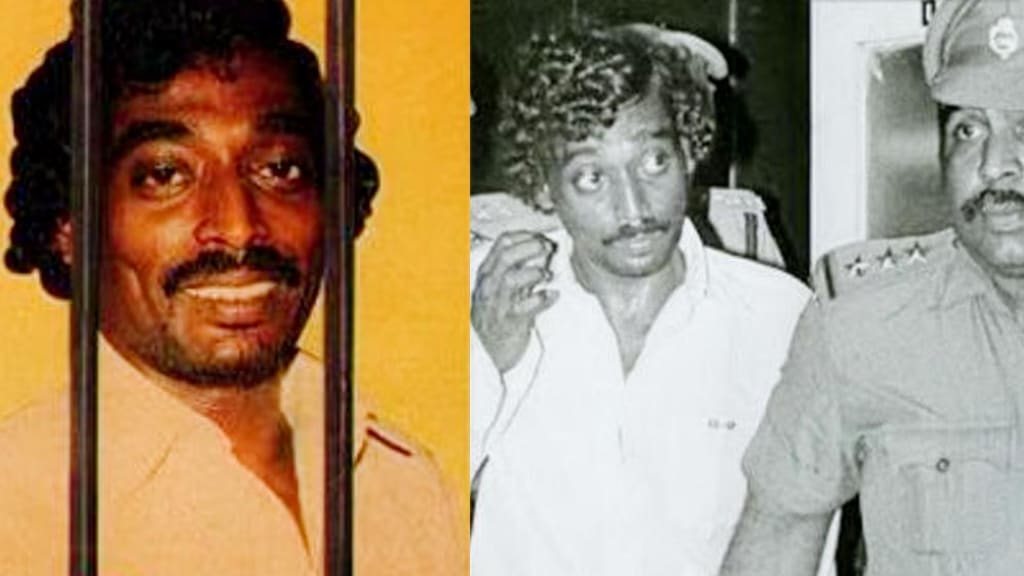
Early Life:
Gowri Shankar, later known as Auto Shankar, was born in a small village in Tamil Nadu, India. Little is known about his early life, but as he grew up, he became involved in petty crimes and local criminal activities. His moniker "Auto" was derived from his involvement with auto-rickshaws, which he used for his initial criminal operations.
Criminal Ascension:
As time went on, Auto Shankar's criminal activities escalated in scale and brutality. He formed a gang that specialized in kidnapping, murder, and prostitution. His criminal empire was built on fear and manipulation, with his gang members carrying out his orders with unquestioning loyalty. Shankar's network extended to various parts of Tamil Nadu, and his ability to evade the police earned him a reputation as a cunning and dangerous criminal.
Kidnappings and Murders:
Auto Shankar's gang was responsible for a series of abductions, primarily targeting young women. These victims were often forced into prostitution or subjected to brutal treatment. The gang's ruthlessness was exemplified by their involvement in the killing of several individuals, including those who dared to oppose or expose their activities. The notoriety of these crimes soon attracted the attention of law enforcement agencies.
The Police Investigation:
The Tamil Nadu police, under increasing public pressure, intensified their efforts to dismantle Auto Shankar's criminal network. A dedicated team of officers focused on gathering evidence against him and his gang members. The investigation was fraught with challenges, as the gang's extensive connections often allowed them to evade arrest. Despite these obstacles, the police managed to uncover critical information that would later be presented in court.
Arrest and Legal Proceedings:
In 1989, the law finally caught up with Auto Shankar. He was arrested along with several of his gang members, and a series of trials began. The evidence against them included statements from victims, witnesses, and recovered materials that linked them to the crimes. Auto Shankar's trial was a media spectacle, with the public closely following the proceedings.
Conviction and Death Sentence:
In 1994, Auto Shankar and his accomplices were found guilty of multiple counts of murder, kidnapping, and other criminal activities. The court handed down death sentences to them, marking a significant moment in India's legal history. The verdict was seen as a triumph of justice over the influence of organized crime.
Execution and Legacy:
On April 27, 1995, Auto Shankar and his gang members were executed by hanging in Salem Central Prison. The execution brought an end to a chapter of criminality that had terrorized Tamil Nadu for years. While his death provided a sense of closure for the victims and their families, it also raised questions about the systemic issues that allowed such criminal enterprises to flourish.
Auto Shankar's story has continued to captivate the public's imagination, inspiring various adaptations in literature, film, and television. His life serves as a stark reminder of the darkness that can arise within society and the importance of a vigilant and robust criminal justice system to counter such threats. The legacy of Auto Shankar remains a cautionary tale of the consequences that await those who choose a path of crime and exploitation.
The story of Auto Shankar serves as a stark reminder of the consequences of engaging in criminal activities, the power of justice and unity, the importance of criminal justice reform, and the significance of making ethical choices. It highlights the consequences of crime, the power of justice and unity, the need for continuous improvement and reform within the criminal justice system, and the importance of standing up against wrongdoing.
Auto Shankar's life serves as a cautionary tale for individuals who might be tempted by the allure of crime and power. It illustrates that a path of criminality leads to a life filled with fear, mistrust, and tragic consequences, which can help deter potential criminals and encourage individuals to choose a path of integrity and responsibility.
The media's attention and public interest in Auto Shankar's case highlight the role of media in exposing crime and ensuring accountability. The public's demand for justice played a crucial role in pressuring authorities to take action against the criminals.
In conclusion, the story of Auto Shankar offers lessons about the consequences of crime, the power of justice and unity, the importance of criminal justice reform, and the significance of making ethical choices. It serves as a reminder that a society's commitment to justice and collective well-being can ultimately triumph over even the most organized and ruthless criminal enterprises.
About the Creator
G Nithish
"Hey there! I'm G Nithish, a passionate blogger and article writer. With a knack for crafting engaging content, I specialize in bringing unique perspectives to life. where words spark curiosity and connections."






Comments
There are no comments for this story
Be the first to respond and start the conversation.